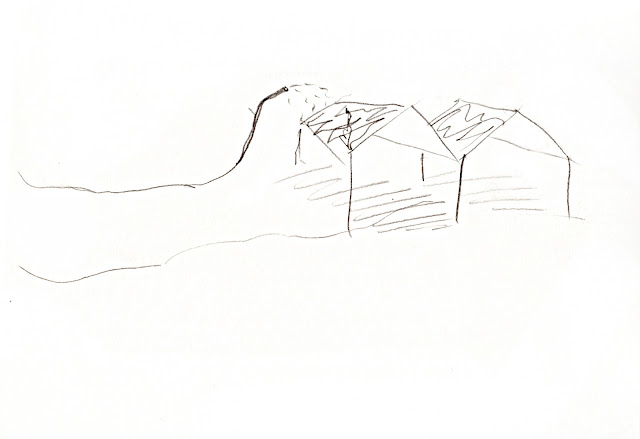Six out of eight our group members, and our tutor Marco Casagrande travelled to Taipei. Thanks to our helpful guides Yu-chen and Frank, we found ourselves in the most interesting and hidden places of the city.
 |
| Day 1 (click on pictures to see them in a bit bigger scale) |
Throughout the trip we managed to see a particular and special culture of Taipei City - community gardens - located randomly, often illegally, by the ´first generation´ of Taipei, people, who remember how the waterways were the main source of living and means of transportation - partly they have carried the lifestyle and traditions with them, which explains the existence of the gardens as a source of local knowledge and hidden potential to create linkages between young and old generations, developing a more sustainable living environment in the industrialized city's circumstances. The garden depicted in the pictures above is located in the very center of the city, nearby Taiwan´s World Trade Center and the landmark of the modern city - Taipei 101 Tower. A concept of urban nomding can be experienced in Ruin Academy, fragment in the below-left corner.
 |
| Day 2 |
In the quiet street nearby the area of small cafes, there is an individual part of the channel. Behind the green fence used to be a community garden, which now awaits real estate developers, though it would be a great location for open greenery area.
 |
| Day 3 |
Walking from that on towards Treasure Hill, we discovered a huge area of greenery - people who lived in nearby houses keeping a garden, but also, a big natural area - it gives a fresh breath inside an industrial city of 2.7 million people. And, a small picture of eggs - they seemed to be almost like a national food - anyone who visits Taipei will grasp that.
Since we managed to go to Treasure Hill in each abovementioned day, here is collage of that place. Marco, who most likely knows all the details of enlivening this place up, is introducing the area. A grassfield that is now mainly for tourists used to be farming area, which has now remained in a very small scale.
 |
| Day 5 |
We continued to visit another community garden, which is said to have traditions in urban farming dating back to the beginning of the 20th century. Located on an island, inbetween two bridges near the Xindian river in the heart of the city, it gives the place a special atmosphere - hopefully an area which will never be full of concrete houses, but seen as a promising case for sustainable city development. Gardens have strict rules of owning the plots, which are visible for everyone entering the gardens from the bridge - on the wall, in black and white - no misunderstandings.
In the afternoon, we had a pleasant opportunity to meet professor Rouan, who introduced us to the work of great architect Hsieh Ying-Chun, exhibition which was curated by him. Not less memorable is the evening that followed - discussions about anarchy, love and urban ecopuncture, and a piece of performance of Taiwanese literature. The most tireless ones continued with the sauna in Ruin Academy, probably the most unique sauna in Taipei.
 |
| Day 6 |
On the remaining days we investigated more precisely the area of the channel, as predicted, many surprises occured, as well changes we had planned beforehand. Here are some streetviews and images of the places near what our planned channel would flow, and the starting spot of the water takein from the river to the channel (picture above left). More of them can be seen in our report of the project.
When looking at the pictures here to depict our research, I realized that they lack somewhat the noisy atmosphere of the existent city - below is collected some of them to convey that, if that could be conveyed at all :).
These were some moments we tried to capture here, of course far not all our experiences are described here - the night markets, geological park, Drunken Moon Lake, cafes, museums, splendid experiences of food and manymany things that made the trip so special. To develop projects like this one, we all agreed that, field trips are essential part of the work, and not only for realizing set locations and tasks of the projects, but getting an overview and understanding of the local culture, people and environment. Special thanks to Marco for keeping this scale projects alive, Yu-chen and Frank for their help and contribution to the trip and project.















